Electric heaters have become an essential part of our lives, especially during the winter season in the UK. They provide warmth and comfort, but they can also be expensive to operate. Latest government data for last year shows the average annual electricity bill has jumped up to over £870. So, finding an efficient and cheap to run electric heater is important for both your wallet and the environment.
In this article, we will discuss the importance of finding an energy-efficient and cost-effective electric heater, the factors to consider when choosing an electric heater, and an overview of different types of electric heaters.
Disclosure: Some of the links below are Amazon affiliate links. This means that, at no cost to you, we may earn an affiliate commission if you click through the link and complete a purchase.
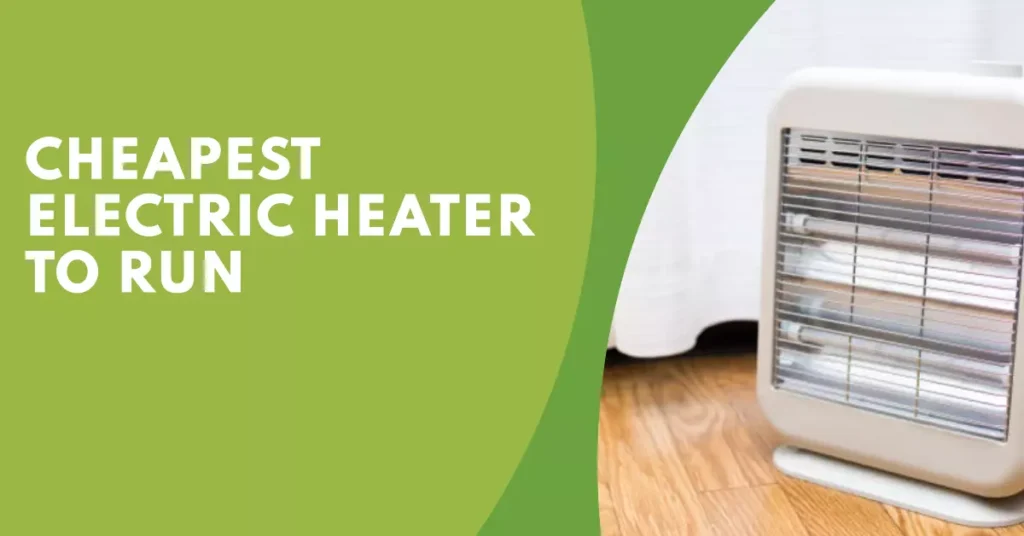
Key Takeaways
- Importance of Energy Efficiency: It’s crucial to prioritize energy efficiency in electric heaters to save on costs and reduce environmental impact.
- Calculation of Energy Efficiency: Understanding how energy efficiency is calculated helps evaluate the cheapest operational expenses based on electricity rates.
- Cheapest Electric Heater: The infrared heater is the most cost-effective option, costing only 26p per hour on average when used efficiently in 2023.
- Types of Cost-Effective Heaters: Examples of affordable heaters include electric radiators, oil-filled radiators, fan heaters, and storage heaters.
- Consideration of Features: When buying an electric heater, consider factors like energy efficiency, wattage, heating technology, programmable features, and price to make an informed decision.
The cheapest electric heaters to run include:
- Infrared heater
- Electric radiator
- Oil-filled radiator
- Fan heater
- Halogen heater
- Storage heater
The Importance of Energy Efficiency
Being mindful of our energy usage not only benefits our wallets but also the environment. The average UK electricity bill has been on the rise constantly, making it increasingly crucial to make informed decisions about our energy consumption.
When it comes to heating our homes, electric heaters offer a practical and efficient solution. They allow us to heat specific rooms without the need to activate the central heating system, which can often result in wasted energy.
However, with the wide range of electric heaters available, it can be challenging to determine which type is the most energy-efficient and cost-effective. Let’s explore each type of electric heater in detail to make an informed decision.
1p per hour heaters – Do they still exist?
How to Calculate Energy Efficiency
Before we dive into the specifics of each electric heater type, it’s essential to understand how energy efficiency is calculated. In this guide, we have based our calculations on the latest average electricity prices in the UK.
The cost of electricity is typically measured in kilowatt-hours (kWh) for a standard rate, while the rates for Economy 7 energy may vary. By considering the running costs, we can better evaluate which type of room heater offers the cheapest operational expenses.
To calculate the daily operating cost, multiply the hourly operating cost by the number of hours the heater will be used each day. For example, if the heater will be used for 7 hours per day, the daily operating cost would be £0.225 x 7 = £1.57
What is the cheapest electric heater to run in 2023?
Overall, the cheapest electric heater to run is the infrared heater at a cost of only 26p per hour on average, when using timing controls efficiently. But this heater is limited in the amount of heating it provides to a room. It is ideal for heating one person in a small room.
Examples of the cheapest to run heaters include Elnur 1.9kw Ecombi Smart Night Storage Heater; Warmlite 2kW Thermo Fan Heater; Daewoo 1200w Oscillating Halogen Heater; SONBION 800W Infrared Heater; Purus 600W Eco Electric Radiator.
Electric heaters: running costs guide
As almost everyone knows, electricity prices are more expensive than gas per unit, so it’s vital we choose the most cost-effective, energy efficient electric heating. Here we look at which type of electric heater is available and which is the cheapest to run:
| Appliance – Heater Type | Approx. Cost to Run | Space Heating or Directional | Estimated Daily Cost (7 hrs) | Typical Price on Amazon |
|---|---|---|---|---|
| Infrared heaters 1.5kW | £0.26 /hour | Directional | £1.82 | £139.99 |
| Electric radiators 1kW | £0.30 /hour | Space | £2.10 | £129.99 |
| Oil filled Radiator 1.5kW | £0.32 /hour | Space | £2.24 | £99.99 |
| Fan heater 2kW | £0.35 /hour | Directional | £2.45 | £34.99 |
| Halogen heater 1.2kW | £0.28 /hour | Directional | £1.96 | £39.99 |
| Storage heater 2.5kW | £0.37 /hour | Space | £2.59 | £199.99 |
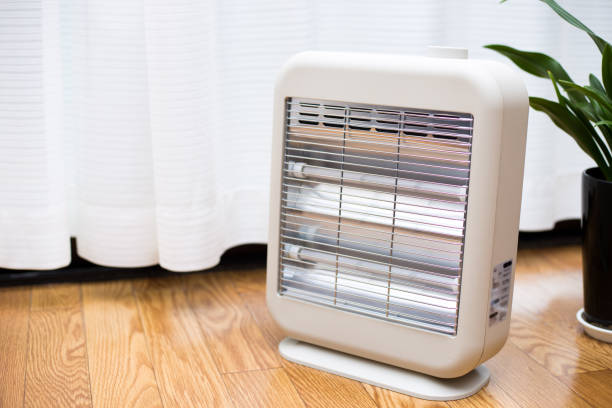
Halogen heaters and their running costs
Halogen heaters, like this STAYWARM 1200W or this BELACO portable model gives off radiant heat which means it doesn’t need to heat the air around us to keep us warm, it goes straight to you. This is why they are regularly seen in outdoor settings like patios and terraces and they heat up to full quickly. Halogen heaters are also lightweight and portable.
They can quickly provide heat on turned on but as soon as you turn them off, the heat quickly dissipates. In terms of disadvantages, they’re not ideal for large areas for space heating as they are directional and will only heat what they are facing.
These heaters are designed to be portable, making them easy to move from room to room as needed. They are also incredibly easy to operate, with simple controls that allow you to adjust the temperature and output level to suit your needs.
One of the key benefits of halogen heaters is their safety features. Many models come with built-in safety features such as tip-over protection, overheat protection, and automatic shut-off. These features help to prevent accidents and ensure that the heater is safe to use in any situation. Additionally, halogen heaters are typically cooler to the touch than other types of heaters, further reducing the risk of burns or other injuries.
When it comes to noise levels, halogen heaters are generally very quiet. Unlike some other types of heaters that can be loud and disruptive, halogen heaters operate quietly and efficiently. This makes them a great choice for use in bedrooms or other spaces where you want to maintain a peaceful environment.
Customer reviews and ratings can be a helpful tool when it comes to choosing a halogen heater. Many popular models have received high ratings and positive reviews from customers who appreciate their ease of use, safety features, and effectiveness at providing warmth.
Are halogen heaters cheap to run?
A 1.2kW halogen heater, which is the typical size costs around £20 to buy for a basic model and in terms of running costs will be about £1.96 per day.
This halogen heater could be perfect for your needs.
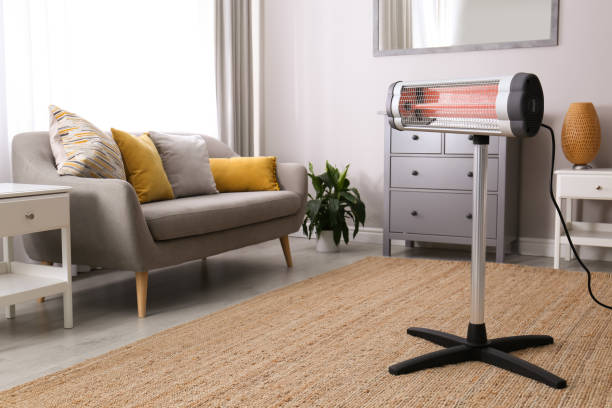
Infrared heaters and their running costs
An infrared heater, like this SONBION 800W warms up a space by emitting electromagnetic waves into the air but doesn’t actually heat the air up, instead it heats up whatever object – people or furniture etc, the waves come into contact with. So they are different from convection heaters.
These heaters are portable, allowing them to be moved from room to room as needed. They are also simple to use, with settings that let you to modify the temperature and output level to meet your specific requirements.
One of the most important advantages of infrared heaters is their safety features. Many versions include safety features like tip-over protection, overheat protection, and automatic shut-off. These characteristics aid in the prevention of accidents and ensure the heater’s safety in any situation. Infrared heaters are also often colder to the touch than other types of heaters, lowering the risk of burns or other injuries.
When it comes to noise levels, infrared heaters are generally very quiet. Unlike some other types of heaters that can be loud and disruptive, infrared heaters operate quietly and efficiently. This makes them a great choice for use in bedrooms or other spaces where you want to maintain a peaceful environment.
The advantages are that the heat lasts for a while even after the heater is switched off; because the air isn’t warmed up but the object, draughts are not as big a problem as with convection heaters. An infrared heater can be moved around easily. An infrared panel heater is also easy to install and some firms now include this in the price.
Are infrared heaters cheap to run?
Prices for infrared heaters start from £100 and get more expensive with higher power output and more features in them. In terms of running costs, depending on the size of it, say it is 1.5kW; the infrared heater will cost around £1.82 per day for a 7 hour heating period.
Take a look at this infrared heater from Amazon as an example for a family room.
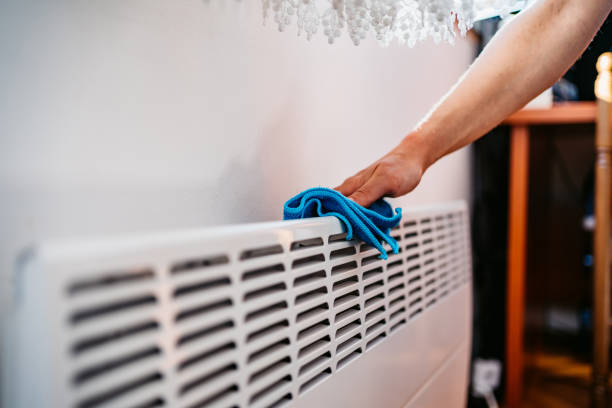
Storage heaters and their running costs
These heaters are designed to store heat during off-peak hours and release it throughout the day, providing consistent warmth without the need for constant energy input. This makes them a great choice for those looking to save on energy costs.
When it comes to safety features, storage heaters typically come with built-in safety features such as overheat protection and automatic shut-off. These features help to prevent accidents and ensure that the heater is safe to use in any situation. Additionally, storage heaters are typically cooler to the touch than other types of heaters, further reducing the risk of burns or other injuries.
Storage heaters are specifically engineered to harness cheaper night time electric rates. They store heat overnight when rates are lower and release it gradually during the day. Storage heating works by storing up heat at night at the cheapest electricity unit price and then releasing it gradually throughout the day. They tend to be big and bulky and fixed to the wall so are not portable, but a storage heater is a cheap running heater.
Each storage heater works individually, so you can choose different heat settings for different rooms. To take advantage of the cheaper tariff, your electricity meter has to be capable of measuring night and day readings separately.
In terms of noise levels, storage heaters operate silently and efficiently. This makes them a great choice for use in bedrooms or other spaces where you want to maintain a peaceful environment.
Are storage heaters cheap to run?
A typical storage heater unit can cost around £400 and to run a typical 2.5kW unit for a 7 hour heating period can cost around £2.59 per day at the current electricity prices taking advantage of the cheaper Economy 7 or 10 tariffs at night.
This electric storage heater is an example.
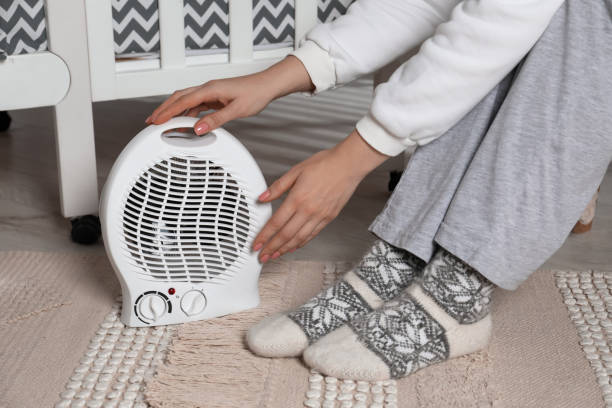
Fan heaters and their running costs
Fan heaters, like this Pro Breeze oscillating and DeLonghi fan heater, heat up a metal coil and the fan blows the hot air produced into the room. The advantages of fan heaters are that they are compact and easy to move around. They also give instant heat and compared to other types are cheap to buy.
They are preferable when looking to heat a room for a short time. The problems are that they must be constantly on to give heat as they don’t give out any residual heat after being switched off. Plus they don’t heat up a large room very well.
In terms of noise levels, fan heaters can vary widely depending on the model. Some models are designed to operate quietly, while others can be quite loud. If noise is a concern, it’s important to look for a fan heater that is specifically designed to operate quietly.
Are fan heaters cheap to run?
A 2.4kW oscillating fan heater can cost as little as £19.99. A fan heater’s running costs, if they’re not going to be used between midnight and 7am, is going to cost around £2.45 per day for a 7 hour heating period.
This fan heater from Amazon is highly rated by customers.
Oil filled heaters and their running costs

Like this VONHAUS 2.5kW or this DELONGHI model, these electric powered heaters heat the oil inside them which circulates through the fins or columns and as they get hot, the heat is released into the air through convection. They are slow to heat up to full but can last longer, even when switched off.
Plus they are very efficient and don’t have to run continually to give warmth. They are also portable with many having wheels to be moved around easily.
When it comes to noise levels, oil-filled heaters are generally very quiet and operate silently and efficiently. This makes them a great choice for use in bedrooms or other spaces where you want to maintain a peaceful environment.
Are oil filled radiators cheap to run?
Oil filled radiators cost upwards of £20. For a typical 1.5kW power rating, the running cost will be around £2.24 per 7 hour heating period, as these type of heaters can typically be turned off earlier as they give out heat for some time after they’re switched off.
This low energy oil filled radiator could be an ideal cost effective heater for a family room.
Electric radiators and their running costs
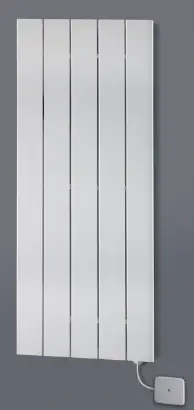
Electric radiators can be installed just like central heating radiators but they don’t need to be connected to any other radiator and can work on their own in each room. They’re usually filled with an oil or liquid which warms up through an electric current and emit heat through convection and some radiant heat. The wall mounted units only require a plug socket and can heat a room up much faster than gas central heating.
Check out a stylish electric radiator here
Are electric radiators cheap to run?
Electric radiators cost from £150 upwards depending on size and heat output and they become more expensive with better features. The cost to run one heater is about £2.10 per day for a typical 1kW output.
You will need to check if it’s a space heater that warms the room up or is directional to heat objects and individuals, this is important if there is a family to keep warm or just one or two people. They all have their pros and cons but because of the variety of appliances available, you will even be able to mix and match to suit each room and needs.
How To Compare electric heaters with different power outputs
Comparing electric heaters with different power outputs can be done by considering their energy efficiency and calculating their operating costs. Here’s how you can compare the cost-effectiveness of electric heaters with different power outputs:
- Determine the power consumption: Calculate the power consumption of each heater by multiplying its power output (in watts) by the number of hours you plan to use it per day. For example, if Heater A has a power output of 1000 watts and you use it for 4 hours per day, the power consumption would be 1000 watts x 4 hours = 4000 watt-hours (or 4 kWh).
- Check the energy efficiency: Look for the energy efficiency rating or information provided by the manufacturer. Higher energy efficiency ratings generally indicate that the heater can convert a higher percentage of the electrical input into heat, resulting in lower operating costs.
- Calculate operating costs: To compare the operating costs of different heaters, multiply the power consumption calculated in step 1 by your electricity rate (usually given in kilowatt-hours or kWh). For example, if your electricity rate is £0.30 per kWh, the operating cost for Heater A would be 4 kWh x £0.30/kWh = £1.20 per day.
- Consider additional features: Take into account any additional features that may impact energy usage or cost, such as programmable thermostats, timers, or eco modes. These features can help optimize energy consumption and reduce operating costs over time.
- Compare the operating costs: Compare the calculated operating costs of the different heaters to determine which one is the cheapest to run. Choose the heater with the lowest estimated operating cost per day, week, or month, depending on your desired comparison period.
It’s important to note that while operating costs are crucial, also consider other factors such as heating capacity, safety features, and suitability for your specific needs. A heater with a lower power output may take longer to heat a room but could still be cost-effective if it has excellent energy efficiency.
Balancing energy efficiency, power output, and operating costs will help you make an informed decision about the cheapest electric heater to run for your requirements.

Things to Look for When Buying the Cheapest Electric Heater to Run
When looking to purchase the cheapest electric heater to run, there are a few key factors to consider.
Energy Efficiency
- Look for heaters with high energy efficiency ratings, such as those labeled with the Energy Star certification.
- Choose heaters designed to consume less energy while providing effective heating.
Wattage
- Consider the wattage of the heater.
- Lower wattage heaters tend to be more energy-efficient and can help keep your electricity bills lower.
Heating Technology
- Pay attention to the heating technology employed by the heater.
- Ceramic heaters or infrared heaters are known for their energy efficiency and targeted heat distribution.
Programmable Features
- Look for features like programmable thermostats and timers.
- These features can help you control and optimize energy usage, reducing costs.
Research and Comparison
- Read reviews and compare prices to find the most cost-effective option.
- Balance price with efficiency and performance to ensure the best value for your money in terms of both upfront costs and long-term energy savings.
Conclusion
Remember to consider the heater’s energy efficiency rating, heating capacity, thermostat features, and safety measures when making your selection. With the right cost-effective electric heater, you can embrace the winter season with warmth and savings.
Electric heaters can provide an efficient way to heat your home, especially if you take advantage of night time electricity rates that are cheaper than daytime peak rates.
